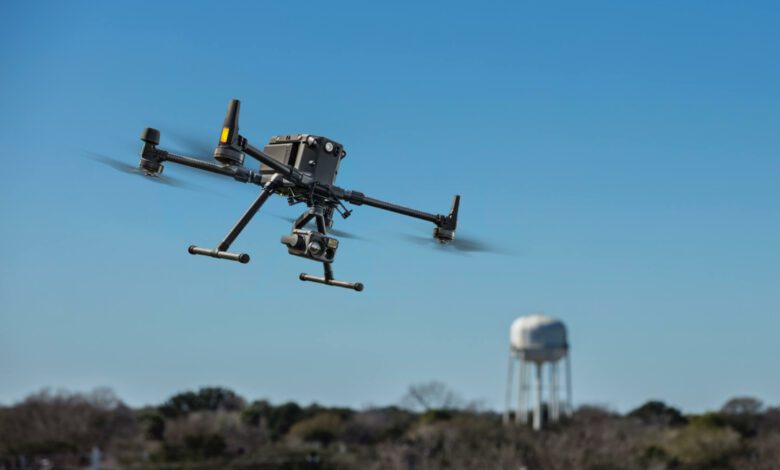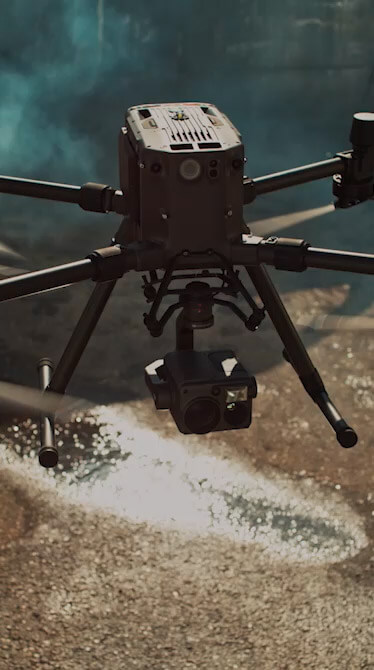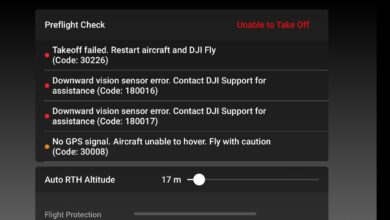DJI Matrice 300 RTK: A Versatile Aerial Operations Powerhouse

The DJI Matrice 300 RTK is a professional-grade drone intended to suit the needs of a wide range of industries. The Matrice 300 RTK establishes a new standard for aerial operations with its innovative features, durable construction, and outstanding capabilities. In this blog article, we’ll go over the specifics of this remarkable aircraft, including its size, weight, flying performance, camera compatibility, and more.
Specifications of the aircraft:
- Dimensions: The Matrice 300 RTK has an unfurled length of 810x670x430 mm (LxWxH) and a folded length of 430x420x430 mm (LxWxH). Its small size makes transportation and storage simple.
- Diagonal Wheelbase: The drone’s 895 mm wheelbase offers stability and manoeuvrability during flight.
- Weight: The Matrice 300 RTK weighs 3.6 kg without batteries and 6.3 kg with two TB60 batteries. Its lightweight construction adds to its agility and long flying duration.
Flight Capability:
- The drone’s maximum takeoff weight is 9 kg, allowing for the addition of different payloads and sensors.
- Hovering Accuracy: The Matrice 300 RTK hovering accuracy is remarkable, with vertical precision ranging from 0.1 m to 0.5 m (depending on the enabled systems) and horizontal accuracy ranging from 0.3 m to 1.5 m.
- Maximum Flight duration: With a maximum flight duration of 55 minutes, the drone offers a wide operating window for effective data gathering and mission completion.
- Maximum Speed: The Matrice 300 RTK has an excellent top speed of 23 m/s in Sport mode and 17 m/s in Positioning mode.
- With a maximum wind resistance of 12 m/s, the drone stays steady and trustworthy even in adverse weather conditions.
Camera Support and Gimbal Configurations:
- DJI Gimbals Supported: The Matrice 300 RTK is compatible with a variety of DJI gimbals, including the Zenmuse XT2, XT S, Z30, H20, H20T, DJI P1, and DJI L1, allowing for a wide range of image and data collecting capabilities.
- Gimbal Configurations: The drone may be equipped with a single downward gimbal, twin downward gimbals, a single upward gimbal, upward and downward gimbals, and triple gimbals. This adaptability allows for customised payloads depending on project specifications.

Other notable features include:
- GPS, GLONASS, BeiDou, and Galileo satellite systems are integrated within the Matrice 300 RTK, giving accurate location information for precise flight control and georeferencing.
- With an IP45 classification, the drone is resistant to water splashes and dust, making it appropriate for operations in difficult conditions.
- Obstacle detecting System: Because the drone is equipped with an innovative obstacle detecting system, it can identify and avoid obstructions in many directions, improving flight safety.
- When enabled and fixed, the RTK positioning accuracy of the drone is remarkable, with horizontal precision of 1 cm + 1 ppm and vertical accuracy of 1.5 cm + 1 ppm.
Best in class drone from dji
In the realm of airborne operations, the DJI Matrice 300 RTK is a game changer. This drone enables experts in areas such as surveying, inspection, public safety, and mapping to take their operations to new heights thanks to its durable construction, prolonged flying duration, superior obstacle detecting technology, and compatibility with different gimbals. The ability of the Matrice 300 RTK to cover the Landsat 8 and Sentinel-2 satellite bands at increased spatial resolution offers another degree of adaptability and data accuracy.
The aircraft’s remarkable flying performance, which includes a lengthy flight period of 55 minutes and a top speed of 23 m/s, allows operators to cover more regions in a single trip and accomplish tasks more effectively. The drone’s excellent wind resistance of 12 m/s enables stability and dependability even in adverse weather conditions, broadening the scope of airborne activities.

The clever flight battery system is one of the Matrice 300 RTK’s distinguishing characteristics. With a capacity of 5935 mAh and a voltage of 52.8 V, the TB60 batteries offer enough power for long flights. When coupled with the built-in battery, the drone can accommodate up to eight TB60 batteries, providing for a substantially longer flying duration of about 4.5 hours. The BS60 Intelligent Battery Station charges batteries quickly and efficiently, with complete charges lasting as little as 60 minutes.
The remote controller of the Matrice 300 RTK provides a dependable and long-range connection with a maximum transmission distance of up to 15 kilometres (depending on area laws). Its ergonomic design and simple controls give a smooth flying experience, enabling operators to concentrate on obtaining accurate data and performing complicated flight manoeuvres.
Conclusion
The Matrice 300 RTK may be outfitted with multiple cameras and sensors adapted to individual project needs thanks to a large variety of compatible DJI gimbals and gimbal combinations. The adaptability of the drone allows experts to capture useful data for a broad variety of applications, from thermal imaging cameras to high-resolution mapping cameras.
The enhanced vision system on the drone, which includes obstacle detection sensors and infrared ToF (Time of Flight) sensors, improves flight safety by recognising and avoiding obstructions in real time. The first-person perspective provided by the FPV camera allows operators to manoeuvre with confidence and capture exact pictures.
Finally, the DJI Matrice 300 RTK is a game-changing aircraft that combines cutting-edge technology, great flying performance, and a wide range of payload choices. Its tough build, long flying duration, and sophisticated functions make it a dependable and strong tool for experts in surveying, inspection, and mapping. The Matrice 300 RTK takes airborne operations to new levels of efficiency, precision, and safety.
Follow Dronephi on Twitter, Facebook, Instagram, and LinkedIn, or join on Telegram channel for all the latest updates on FPV, Drone Tech, Military Drones, Drone Related News, and more!




